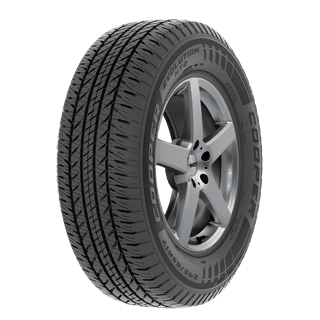Tire Solution: The Effect of Climate Conditions
When it comes to making sure optimum efficiency and safety and security on the road, comprehending the influence of climate problems on tire service is vital. In this conversation, we will certainly discover the complex relationship between weather conditions and tire service, shedding light on the value of weather-specific tire upkeep techniques and factors to consider.
Warmth and Tire Efficiency
When revealed to heats, tires experience changes in performance that can significantly influence vehicle security and handling. The heat generated from long term driving or warm climate problems creates the tire rubber to soften, causing decreased tread life and increased wear. As the rubber becomes softer, the tire's grip on the road lessens, impacting braking ranges and overall grip. In extreme instances, too much heat can also trigger tire blowouts, positioning a severe safety risk to the lorry and its owners.
Moreover, high temperatures can speed up the procedure of tire aging, creating the rubber to degrade more promptly. To reduce the impacts of warmth on tire efficiency, motorists need to routinely inspect their tire stress, revolve tires to make sure also wear, and check for any type of indicators of damage.
Cold Climate Effects
Winter conditions can have a considerable effect on tire efficiency and security. As temperature levels decrease, tire rubber can set, causing reduced grip on icy or snow-covered roads. In chilly weather, tires may also lose atmospheric pressure more swiftly, which can influence dealing with and gas effectiveness. Furthermore, chilly temperature levels can cause tire sidewalls to tense, raising the threat of damage from gaps or various other roadway dangers.
To mitigate the results of winter on tires, it is crucial to on a regular basis examine tire pressure and inflate them to the manufacturer's recommended degrees. Utilizing winter season or all-season tires designed for chilly weather problems can likewise improve grip and grip on icy or snowy roads - tires morris il. Appropriate tire upkeep, including normal evaluations for wear and damage, becomes a lot more critical throughout cooler months to make certain ideal efficiency and safety
Rainy Issues Impact
Throughout wet conditions, tire performance and security can be substantially affected by the wet road surfaces and minimized presence. The step pattern of tires plays a critical duty in keeping traction on wet roads. Tires with damaged footsteps are a lot more prone to hydroplaning, where a layer of water accumulates between the roadway and the tire surface area, causing loss of grip. To combat this, drivers should regularly evaluate their tires for appropriate walk depth and consider purchasing tires particularly developed for wet conditions.

Snow and Tire Safety
When driving in snowy conditions, having the ideal tires can make a substantial difference in security and efficiency. Winter tires are designed with unique rubber substances and step patterns to provide better traction on snow and ice contrasted to all-season tires.
In addition to using winter season tires, it is vital to guarantee they are correctly pumped up. Winter can create tire stress to go down, influencing grip and handling (morris tire and alignment). On a regular basis examining and keeping the right tire stress is necessary for optimal efficiency in snowy problems

Weather-Related Tire Maintenance
When encountered with various weather, correct tire maintenance comes to be an important facet of car security and performance. Weather-related tire upkeep includes a series of practices focused on making certain ideal tire feature and long life in different climate circumstances. One essential facet of weather-related tire upkeep is tire pressure policy. Fluctuating temperatures can trigger tire stress to differ, impacting grip and fuel effectiveness. Routinely inspecting and readjusting tire stress according to supplier recommendations is vital for risk-free driving in transforming weather. Furthermore, tire Full Report walk deepness plays a substantial duty in taking care of different weather elements. Tires with sufficient walk depth supply better grip on wet or icy roads, reducing the risk of skidding or hydroplaning. Evaluating tire step regularly and replacing tires when tread wear gets to a particular depth is vital for maintaining grip and security in negative weather condition. By prioritizing weather-related tire upkeep, chauffeurs can improve security, improve vehicle efficiency, and lengthen the life expectancy of their tires.
Final Thought
In conclusion, weather have a substantial effect on tire performance and safety and security. From warm influencing tire pressure and put on to cold weather condition minimizing grip, it is important to consider the climate when maintaining and utilizing tires. Rainy problems can decrease hold and bring about hydroplaning, while snow can enhance the danger of accidents if tires are not appropriately equipped. Weather-related tire maintenance is critical in guaranteeing optimal efficiency and safety when driving.
In this discussion, we will check out the complex partnership between weather conditions and tire solution, dropping light on the importance of weather-specific tire upkeep practices and considerations.
